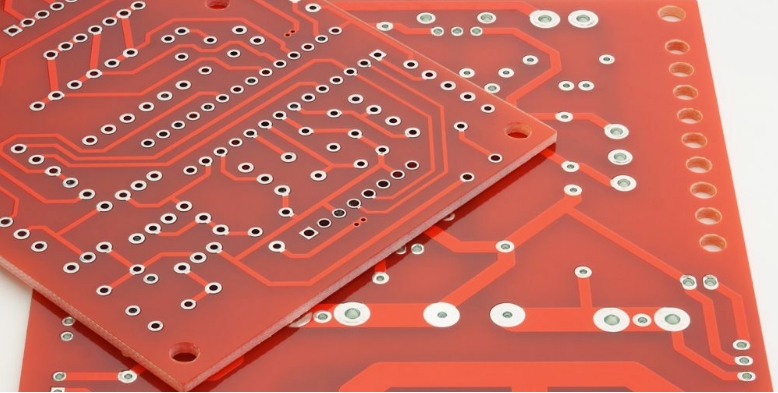Customization is key in the world of printed circuit boards (PCBs). As technology continues to advance, the demand for versatile and high-quality PCBs has soared. Custom double-sided printed circuit boards (PCBs) are becoming increasingly popular among the different types of PCBs available.
This article will discuss custom double-sided PCBs, including their advantages, uses, and how they are made. Are you interested in technology or looking for the best PCB solution? Come learn why custom double-sided PCBs are popular for electronic applications.

A custom double-sided PCB is a versatile electronic board that lets you mount electronic components on both sides. Double-sided PCBs have components on both sides, unlike single-sided PCBs which only have components on one side. These PCBs use through-hole technology (THT) and surface-mount technology (SMT) to accommodate more components. This makes them ideal for projects that require many parts in a limited space.
Double-sided boards offer several advantages over their single-sided counterparts:
Increased Versatility: The ability to mount components on both sides of the PCB increases the board's flexibility, allowing for complex circuit design and enhanced functionality.
Higher Component Density: With two layers for component placement, double-sided PCBs can accommodate a larger number of components, making them suitable for intricate designs.
Improved Signal Integrity: The separation of high-frequency and low-frequency components on different sides of the board minimizes interference, ensuring superior signal integrity.
Reduced Board Size: By utilizing both sides of the board, double-sided PCBs often require less space, making them suitable for compact electronics.
Creating a custom double-sided PCB involves a meticulous manufacturing process that requires expertise and precision. Over the years, PCB manufacturers have developed advanced techniques to produce high-quality, double-sided boards with exceptional electrical performance. Let's explore the typical manufacturing steps involved:
Designing a custom double-sided PCB begins with conceptualizing the circuit and creating a comprehensive layout. Designers utilize dedicated software tools to design the PCB, arrange components, and determine the most optimal routing paths. This crucial step influences the overall performance and functionality of the PCB.
The circuitry is printed on the inner layers of the PCB using a precise etching process. Each layer consists of a copper sheet covered with a photoresist material. The design is transferred onto the layer through a photolithographic process, followed by etching to remove excess copper and retain the desired circuit pattern.
Custom double-sided printed circuit boards (PCBs) have revolutionized modern electronics with their versatility, high component density, and improved signal integrity. By offering the flexibility to mount components on both sides of the board, these PCBs have become the go-to choice for complex circuits and compact electronic designs.
Through meticulous manufacturing processes and advanced techniques, PCB manufacturers have ensured the creation of high-quality, custom double-sided PCBs. Whether you are an enthusiastic DIYer or a professional seeking the ideal electronic solution, custom double-sided PCBs are sure to meet your requirements and propel your projects to new heights.
1. Can I get custom double-sided PCBs manufactured in small quantities for prototyping purposes?
Absolutely! Many PCB manufacturers offer quick-turn services to cater to the prototyping needs of engineers and developers.
2. How does the cost of custom double-sided PCBs compare to other types of PCBs?
The cost of custom double-sided PCBs varies depending on factors such as quantity, complexity, and turnaround time. Generally, they are competitively priced compared to other types of PCBs.
3. Are custom double-sided PCBs reliable for high-frequency applications?
Yes, custom double-sided PCBs are often used in high-frequency applications. The separation of components on different sides helps minimize interference and ensures superior signal integrity.
4. Can I integrate surface-mount technology (SMT) on a double-sided PCB?
Absolutely! Double-sided PCBs support both through-hole technology (THT) and surface-mount technology (SMT), allowing for greater versatility in component selection.
5. How long does it typically take to manufacture custom double-sided PCBs?
The manufacturing time for custom double-sided PCBs varies depending on factors such as complexity and quantity. PCB manufacturers typically provide estimated turnaround times for each order.
Remember, when it comes to electronic applications, custom double-sided printed circuit boards are an excellent choice. Their flexibility, high component density, and improved signal integrity make them an ideal option for a wide range of projects. Explore the world of custom double-sided PCBs and witness the endless possibilities they bring to the realm of electronics.